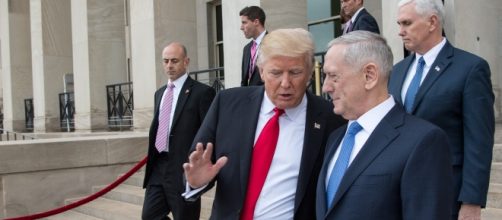Several months after the US government dropped the Mother of All Bombs - or MOAB - in an attempt to crush the fledgling ISIS movement in afghanistan, Donald Trump has given Defense Secretary James "Mad Dog" Mattis the authority to set troop levels in Afghanistan.
US War in Afghanistan
Since 2001, the United States has been fighting one of its longest and costliest wars, mostly against the Taliban. For almost 16 years now, the US has been heavily involved in counter-insurgency measures and attempts to install a stable Western-backed government.
The war has killed over 2,300 American soldiers and wounded over 17,000 others.
When George W. Bush left office, US troop numbers in Afghanistan totaled about 50,000. During Barack Obama's first term, he escalated the war, increasing troop levels to 100,000 after about a year in office. The increase in troop levels came after US officials saw what they viewed as a resurgent Taliban bent on taking the land back from US-backed forces.
About a month after Osama Bin Laden was found hiding in Pakistan, Barack Obama announced he would be lowering troop levels in Afghanistan. By March 2014, the United States had only 34,000 troops left in Afghanistan. When Afghan President Hamid Karzai refuses a security agreement with the United States, Barack Obama asks the Pentagon to consider options for a complete withdrawal of troops from Afghanistan.
In May 2014, Barack Obama announced a plan to remove almost all US troops from Afghanistan by the end of 2016. However, by the middle of 2016, Obama announced that the situation was still too unstable and that troop levels would remain at 8,400 until the end of his second term.
Troop Levels Today
On Tuesday, Secretary of Defense James Mattis made a statement to the Senate Armed Services Committee stating that we are "not winning" in Afghanistan.
Mattis called for the government to "correct this" as soon as possible.
Mattis told sources Tuesday that we were experiencing yet another surge in activity by the Taliban. This statement is clearly a call for increased activity in the region. That, coupled with increased ISIL activity in the country, is set to be a key factor in the US's future strategy in Afghanistan.
Troop levels today stand at around 8,400, but officials say that discussions have centered around increasing that number by between 3,000 and 5,000 troops.
A US military assessment conducted in February showed that the Afghan government was only in control of just above 59 percent of Afghanistan's 407 districts, which is over 11 percent lower than what it controlled in February of last year.
The chairman of the Armed Forces Committee, Senator John McCain, pressed Mattis on the issue of Afghanistan, asserting that the United States needed to recognize the sense of urgency in Afghanistan and develop a "new strategy" to deal with the deteriorating situation.
Many believe that Trump is trying to shift responsibility for the situation in Afghanistan onto the Defense Department by giving them authority over troop levels. However, officials say that no matter which department is in charge of troop levels, the situation rests in the grand strategy of the administration.


